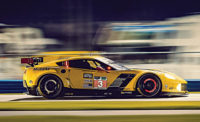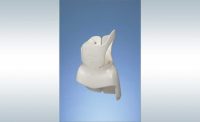Although being part of an international conglomerate has its advantages (such as extensive financial resources and access to cutting-edge technologies), a company still must make good products to establish and expand its customer base. This statement definitely applies to Canadian bus manufacturer Nova Bus Inc., which began in 1993 and has been part of Volvo Bus Corp.—the world’s largest motorcoach and transit bus manufacturer—since 1998.
Nova currently makes several LFX (rigid, articulate) and LFS (standard, rigid, arctic, fully electric) model buses and employs nearly 1,000 workers at assembly plants in Saint-Eustache and Saint-François-du-Lac, Quebec, Canada, and Plattsburgh, NY. U.S. cities that operate Nova buses in their public-transportation systems include Hartford and New Haven, CT; New York; Philadelphia; Honolulu; and Chicago, which has 480 LFS units in its active fleet.
In mid-2013, the company introduced buses with a new, fourth-generation rear layout. Shortly thereafter, however, Nova discovered that the rear chassis sometimes became deformed during radiator installation.
To determine the exact degree of deformation, Nova hired Creaform Inc., which makes 3D measuring equipment and performs 3D measuring services. For this application, Creaform’s application engineers and metrologists used a dual-camera C-Track sensor, MetraSCAN 70 optical scanner and HandyPROBE.
Measuring was performed at the point on the assembly line where the radiator had just been installed on the chassis. After positioning the tripod-mounted sensor so its optics could visually locate the chassis, a Creaform engineer probed the chassis with a HandyPROBE and downloaded the data into a PC. He then measured the chassis from different positions with a MetraSCAN 70 optical scanner, which sent real-time data over a cable to the PC. This probing-and-scanning process was repeated on four more chassis.
Data analysis was then performed by the Creaform team over the next two weeks. It consisted of three steps. Step one was to determine if variations in radiator mounting point hole patterns were within the tolerances allowed by the ASME Y-14.5M standard. Next, the team used colorimetry on a CAD model to compare geometric variations of the chassis with those of the radiator mounting points.
Finally, colorimetry on a CAD model was used to compare the distortion of the installed chassis to its theoretical form—without taking into consideration the impact of the radiator mounting points. After sharing this information with Nova, the two teams worked together to make specific assembly-line process changes and eliminate chassis deformation.
Creaform has served more than 2,000 clients of all sizes in many industries since 2002. Among the most well-known are BMW, Rolls Royce, Renault, Toyota, Cessna, Boeing and GE. For more information on 3D measurement instruments, call 418-833-9588 or visit www.creaform3d.com.




